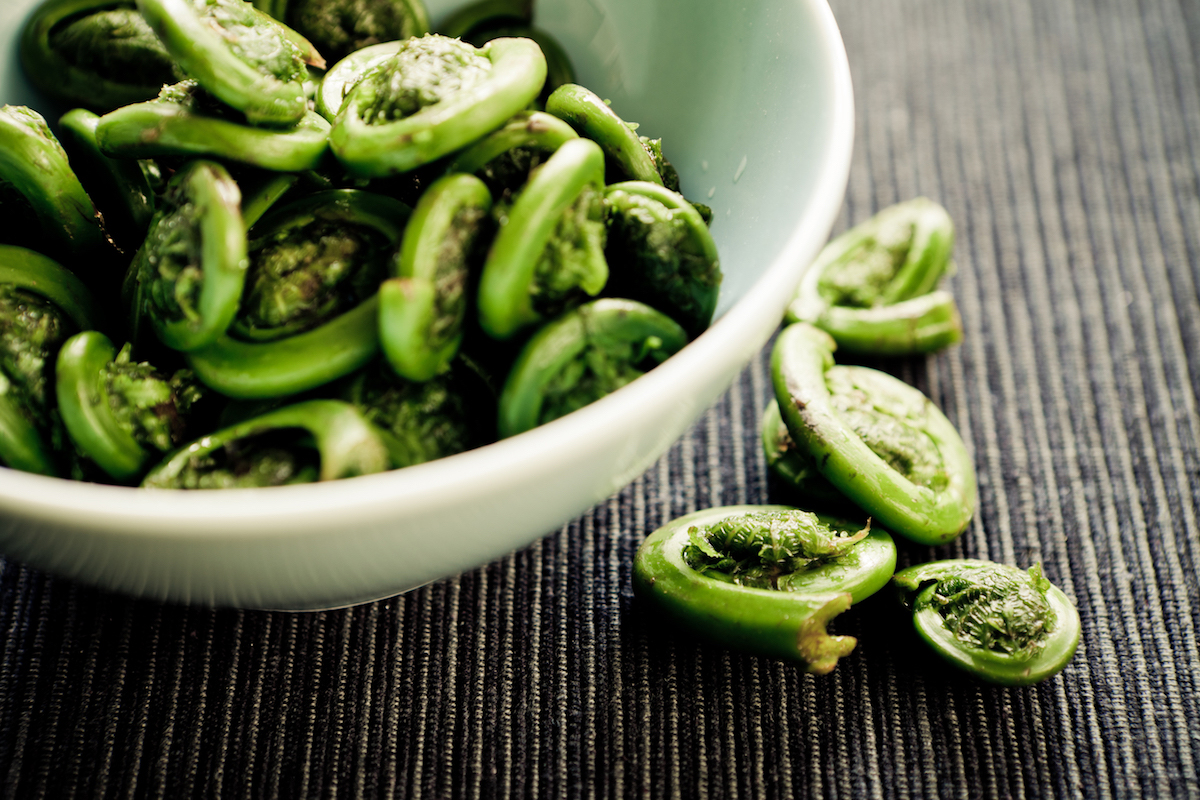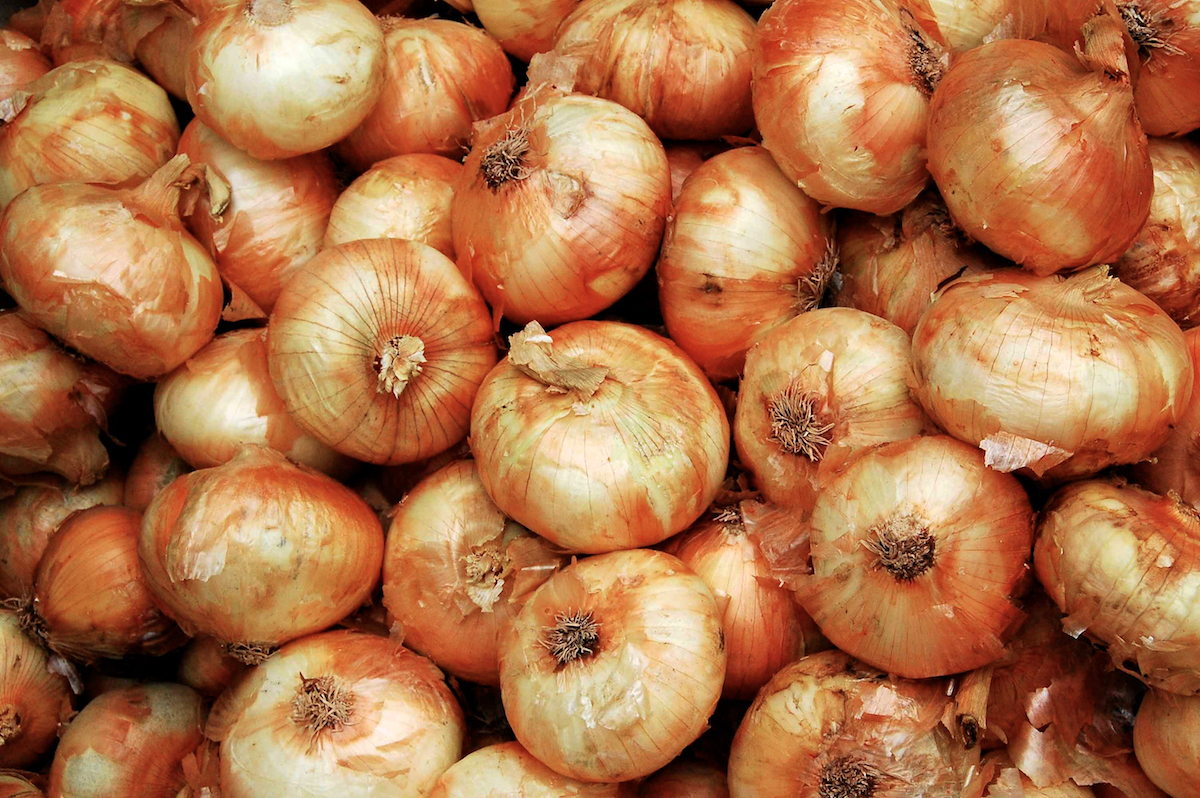6 Fruits and Veggies to Buy at Your Local Farmers Market in May

April showers bring… May produce! (Isn’t that how the saying goes?)
After some slim pickings earlier in the year (April and March were OK, but February was pretty weak), May is here with a full arsenal of flavorful fresh produce.
And the best part? When you shop in season and in your area (like at your local farmers market!), you’ll find fresh produce for way less than you would normally pay at the supermarket.
But since May is one of my favorite months to get outside and enjoy the sunshine, I won’t keep you here long.
Without further ado, here are six fruits and veggies that are in peak season in your neck of the woods this month!
1. Michigan: Morels

While many states in the northern U.S. boast a morel bounty each year, Michigan is serious about its conical mushrooms. Like, the kind of serious that means Michigan has a morel sightings map, but it’s decidedly sparse compared to the surrounding states because nobody in Michigan wants to give up their secret morel spots.
This is because morels are tricky: You have to forage for them, one at a time, from the woods. And they never seem to grow in the same place twice. In fact, some people say morels “only grow where the hunter finds them.” Still, during peak morel season, you can find these unique mushrooms in farmers markets for a decent price as far south as Georgia. And if you can forage them yourself, they’re free. Go here for tips, tricks and safety information.
Many describe morels as having a meaty texture and a nutty, woodsy flavor that is distinct without being weird. Even people who don’t like regular mushrooms (of the cremini or portobello varieties, for example), tend to love morels.
The only difference between cooking the fresh and dried ‘shrooms is that you’ll have to take the extra step of reconstituting the dried ones in water beforehand — a process that takes all of three minutes.
The best way to prepare these earthy little delicacies? Well, it seems unanimous that sauteing them with butter, onions and herbs wins every time.
2. Maine: Fiddlehead Ferns

From the Midwest, we’re headed up to New England, where Maine produces a fleeting crop of fiddlehead ferns, specifically of the ostrich fern variety. These tender little shoots are another foraged delicacy — although you can find them at farmers markets throughout the Northeast during peak season.
Fiddleheads come by their name honestly: They look like the curved, decorative ends of stringed instruments. Some say these tiny, coiled veggies have a flavor profile somewhere between asparagus and broccoli but with a hint of nuttiness, making them a great addition to a fresh, earthy spring meal.
When you’re ready to prepare your fiddleheads, be sure to steam or boil them for 12 to 15 minutes before adding them to any dish, as improperly cooked fiddleheads can be harmful. You can find more information on preparing fiddleheads here.
Once you precook them, you can use them any way your heart desires — just treat them like asparagus. They’re delicious roasted, sauteed or steamed, and add a wonderful crunch to any pasta dish.
Here’s a super-simple recipe for roasted fiddleheads with lemon and capers, but it’s just like cooking asparagus — there’s no wrong way to prepare this delicious veggie.
3. Georgia: Vidalia Onions

OK, so onions don’t really seem like seasonal ingredients. But Vidalia onions — the sweet, not-as-pungent kind grown in the mild winters and specific soil conditions the city of Vidalia, Georgia, is known for — are at their best between the end of April and the middle of June. Also these guys don’t make you cry, so that’s a win in my book.
Because Vidalia onions are so sweet, they’re at their most delicious when left alone. Instead of cooking them up like you would regular onions, take this opportunity to add them to fresh dishes like this sweet (and simple) guacamole or a creamy, vinegary cucumber salad.
4. Hawaii: Pineapples

I’m guessing you’re not reading this from your hammock on a beach in Hawaii. (And if you are, can I join?) But pineapples are in season in Hawaii, which means that these juicy fruits will be at their lowest price point in grocery stores across the U.S. over the next few months.
When you pick a pineapple at the store or farmers market, look for bright and fresh green leaves and a firm (but not hard) shell. The shell’s color doesn’t matter — as long as it’s not bruised or overly soft, a good pineapple’s shell can range from pale green to deep yellow. Pineapples are always picked at their peak — and they don’t ripen after they’re harvested — so be sure to eat it within a few days.
While my favorite way to enjoy this tropical fruit is to spend an afternoon snacking on a heaping bowl of juicy pineapple chunks, sometimes it’s fun to mix it up by grilling this sweet summertime treat.
And putting it on a Hawaiian burger like this one? Game over. And then topping it with some of those sweet Vidalia onions? You’re golden. Golden, I tell you!
5. California: Cherries

Like so many of the other fruits and vegetables on this month’s list, cherries are a momentary happiness. California cherry trees are the last of the commercially grown tree fruits to bloom, but farmers harvest them first — and the window for perfect, ripe cherries is short.
When choosing cherries, look for bright green stems and firm, plump fruits. Avoid cherries with wrinkling around the stem, and don’t discount ones with brown flecks in the skin — this is actually just an accumulation of sugar, which means sweeter fruits, so it’s a good thing!
Store your cherries in the fridge, preferably in a plastic bag, or freeze them to enjoy later.
As for how to prepare them, the possibilities are virtually endless. Should you make a classic pie? A cherry-glazed pork chop? Cherry almond chocolate chunk cookies? All of the above?
The answer is yes.
6. Louisiana: Mayhaws

May is mayhaw season (get it?) in Louisiana! Mayhaws are the fruit of the thorny hawthorn tree. While you can find them in Georgia, Texas, Arkansas and Florida, Louisiana is one of the best growing environments for mayhaws because the trees flourish in swampy river bottoms and warm, muggy conditions.
Some say mayhaws resemble cranberries in appearance and crabapples in taste — they have the same fresh profile as an apple but are more acidically tart than sweet. For this reason, mayhaws are a popular base for jellies and jams, where they’ll be mixed with sugar to level out their sour taste.
And while you can’t go wrong with jelly born of wild mayhaws, try incorporating them into the glaze on this cake for a sweet springtime treat that will make you crave these tiny red fruits year-round.
Sweet Summertime
With farmers markets in full swing heading into the summer months, you should have no trouble finding fresh, delicious produce in peak season — and at low, low prices!
Now go forth and enjoy the beautiful warm weather before it gets so unbearably hot that we all hide inside until the first hint of fall.
Grace Schweizer is a junior writer at The Penny Hoarder. After spending the day writing about so many delicious sounding fruits and veggies, she’s ready for lunch.


















